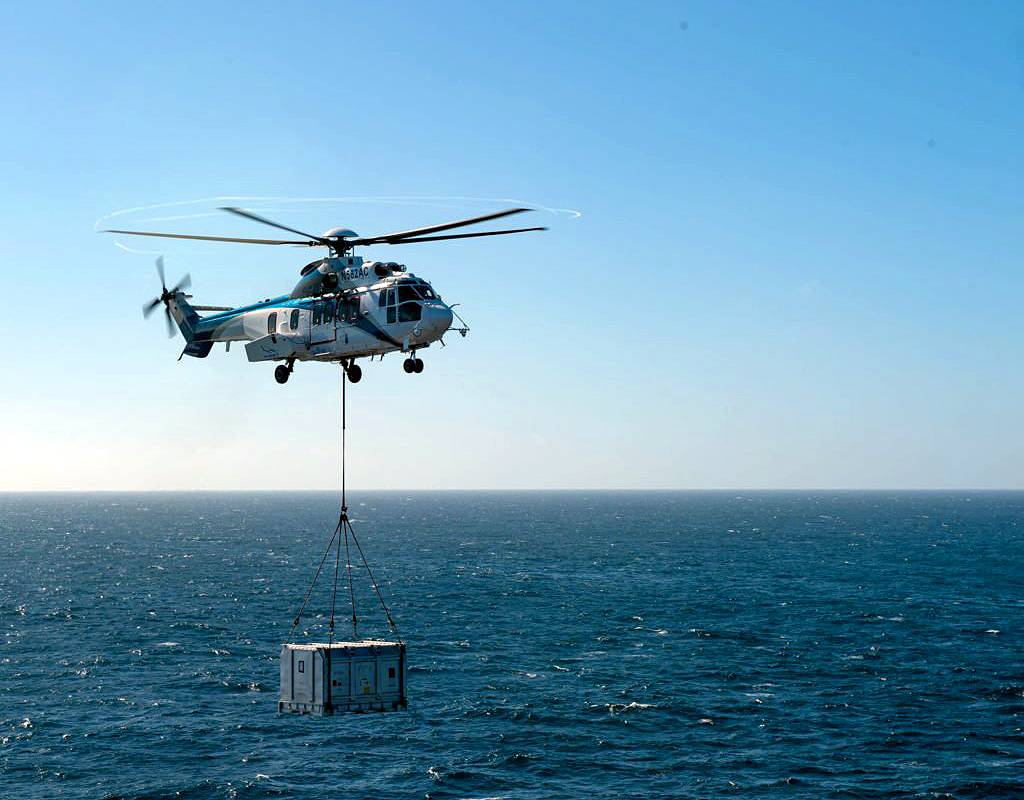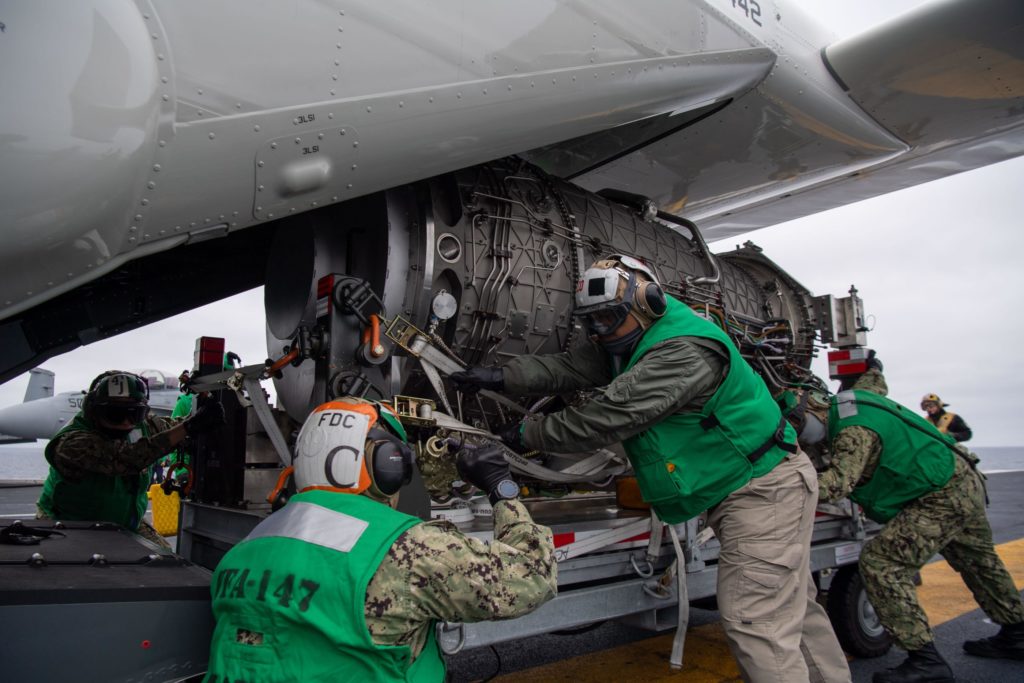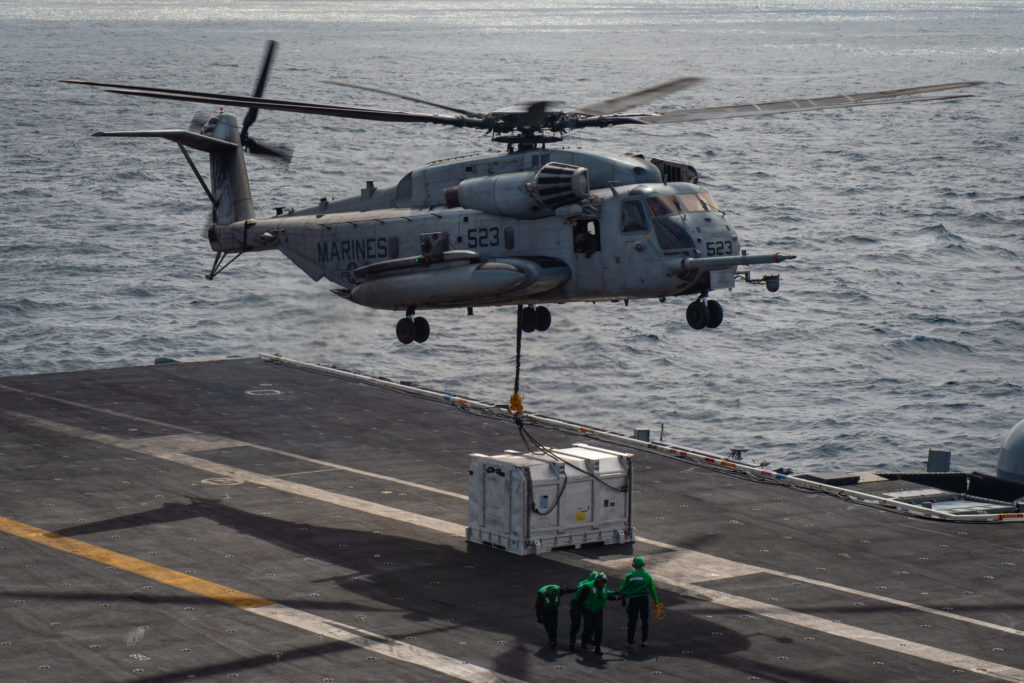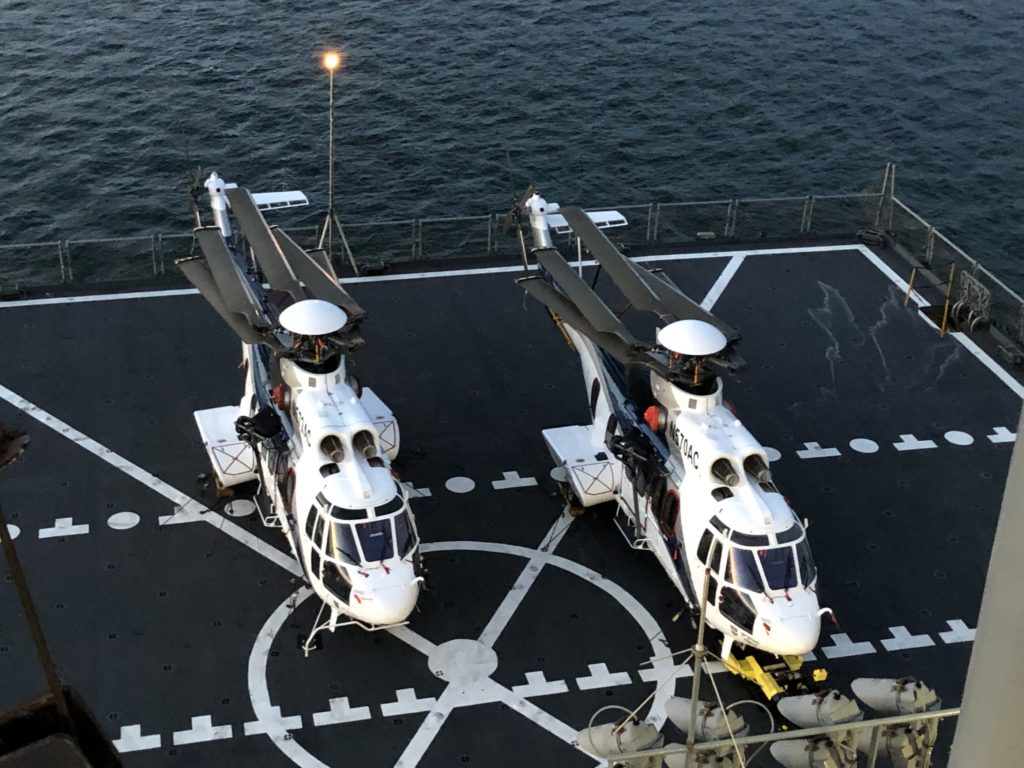
Three different rotorcraft have delivered spare Pratt & Whitney F135 engines, or the equivalent weight, to a U.S. Navy aircraft carrier, an important step toward deploying and sustaining the F-35C Joint Strike Fighter aboard ship.
A CMV-22 Osprey tiltrotor internally carried an F135 engine to the Nimitz-class nuclear carrier USS Carl Vinson in February. A month later, Air Center Helicopters slung a load representative of the power module beneath a civilian-operated Airbus H225 Super Puma and hoisted it from a supply ship to the deck of the Vinson to prove that it could be done with a conventional rotorcraft at sea.
During that demonstration, a Marine Corps CH-53E picked up the mock F135 load, slung externally, and returned it to the supply ship. So the Navy has options when it needs a new engine for an F-35C carrier variant while underway. The Marine Corps F-35B short-takeoff and vertical landing (STOVL) version of the Joint Strike Fighter has a larger engine that incorporates a lift fan module to allow it to jump off smaller carrier decks and land vertically.
The total weight of the load as registered by Air Center’s H225 load meter during the March 6 demonstration was 9,620 pounds (4,363 kilograms), according to Tom Rhodes, the company’s chief business development officer. The Navy aircraft requirement for transporting the F135 is the ability to lift 9,630 lb. (4,368 kg). That weight is a composite total including a specialized module transport container with G-force sensors and shock absorption equipment, the F135 engine module and external load equipment including chains and a pendant, Rhodes said.
Only in November did a CMV-22, the Navy’s new carrier onboard delivery (COD) variant of the Osprey tiltrotor, first land on an aircraft carrier, also the Vinson. On Feb. 11, the Osprey returned to the ship bearing an F135-PW-100 engine for the Navy’s F-35C carrier variant of the JSF inside its cargo compartment. It was the Navy’s first at-sea delivery of the beefy engine, which weighs in at 3,750 lb. (1,701 kg), is more than 18 feet (5.5 meters) long and nearly 4 ft (1.2 m) in diameter.

“The Osprey is a robust logistical platform that not only supports the F-35C but also gives the entire air wing increased range and transport capacity,” said Capt. Matt Thrasher, commander of Carrier Air Wing 2 (CVW-2), which is deployed aboard the Vinson. “Its addition to our team ensures that CVW-2 remains ready to perform as-advertised while on deployment.”
During the demonstration, an F135 was loaded onto a CMV-22B, flown to the ship from the shore and unloaded onto the carrier while underway.
“The delivery marks a milestone in the integration of CMV-22B to the Carrier Air Wing, validates the F135 modular maintenance concept at sea, and most importantly supports future carrier air wing deployments with next-generation platforms,” the Navy said in a statement.

In March, Air Center performed essentially the same mission from shore and between ships by lifting a load simulating the F135 with an H225 Super Puma, which deploy aboard Navy Lewis and Clark-class dry cargo supply ships.
During the demonstration Air Center-operated Super Pumas transported the load, inside a protective case from the USNS Richard Byrd (T-AKE 4) to the Carl Vinson, proving the engine can be moved to a deployed carrier during at-sea operations from an embarked supply ship. Air Center’s Super Puma was specifically configured for heavy lift operations in a maritime environment, according to Rhodes.
“The H225 is the only commercial aircraft to our knowledge that can support the external load requirements of the F135 power module (9,630 pounds) as well as having blade folding technology to support being stored inside the T-AKE ship hangars,” Rhodes told Vertical in an email.
Air Center was the first to deploy the Airbus H225, previously called the EC225LP, aboard U.S. Navy ships in 2018 and began providing heavy lift services to U.S. Military Sealift Command’s commercial helicopter program the following year.

Two Air Center-owned H225 Super Pumas are stored in and flown from T-AKE ships that deploy with U.S. fleets. They support the fleet while it is underway for the entirety of the typically six-week missions at sea.



